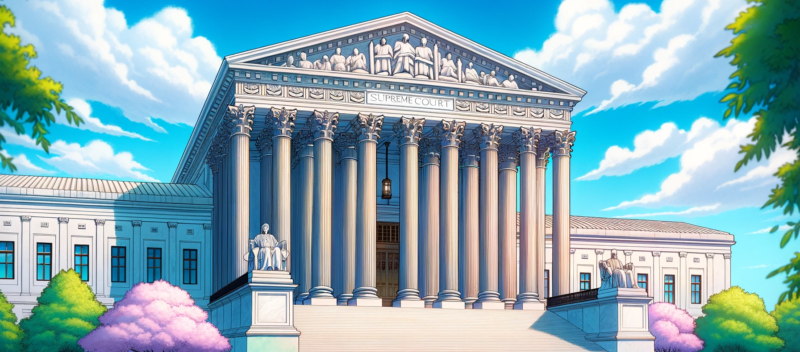by Dennis Crouch

The Supreme Court is set to consider several significant patent law petitions addressing a range of issues from the application of obviousness standards, challenges to PTAB procedures, interpretation of joinder time limits IPR, to the proper scope patent eligibility doctrine. Here's a brief overview of each case, followed by more details:
- MacNeil v. Yita (No. 23-494): This case examines the Federal Circuit's reversal of a PTAB obviousness decision. Petitioner argues that the appellate court substituted its own findings in the reversal rather than vacating and remanding. This could be an important case for revitalizing the importance of secondary indicia of non-obviousness.
- Intel v. Vidal (No 23-135): This case challenges the "Fintiv rule" that restricts the initiation of inter partes review in cases where parallel district court litigation is pending. The PTO is changing its approach, but Intel argues that the Agency isn't going far enough.
- VirnetX v. Mangrove Partners Master Fund (No. 23-315): This case questions the Federal Circuit's interpretation of time limits for joining IPR partes. Apple joined the petition long after it would have been barred from filing its own. Although I sympathize with the petition, I believe the Federal Circuit got the statutory interpretation correct.
- Realtime Data v. Fortinet (No. 23-491): Here, Realtime Data challenges what it sees as lower court improper expansion of eligibility doctrine. It asks the court to reiterate that eligibility is generally quite broad, subject to some quite narrow judge-made exceptions.
- Tehrani v. Hamilton Technologies (No. 23-575): This case involves a dispute over the PTAB's obviousness finding and the Federal Circuit's affirmation, particularly focusing on the qualifications of an expert witness, the proper interpretation of claim terms, etc. There is some really interesting parts of the petition and case, but the petition largely re-argues the evidence -- typically a losing approach at the Supreme Court.
- Vanda v. Teva (No. 23-___): I expect Vanda to challenge the Federal Circuit's decision on the obviousness of its patents covering methods of using a particular drug. Vanda will argue that the court was too quick to jump to its obviousness conclusion. If cert is granted, this would be a very important case.
- Traxcell Techs. v. AT&T (No. 23-574): This case examines whether attorney fees can be awarded based on pursuing litigation deemed "baseless" after a magistrate judge's non-infringement recommendation but before the district judge finalizes that recommendation.
More detail on each case below:
To continue reading, become a Patently-O member. Already a member? Simply log in to access the full post.